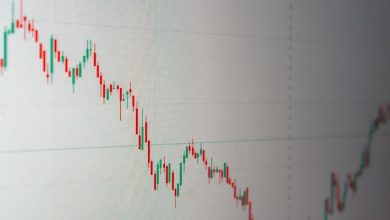The Risks of Staking and Yield Farming in DeFi

- The potential for impermanent loss
- The dangers of smart contract vulnerabilities
- The impact of market fluctuations on staked assets
- The risks of overleveraging in yield farming
- The threat of rug pulls in DeFi projects
- The importance of conducting thorough research before staking or yield farming
The potential for impermanent loss
One of the risks associated with staking and yield farming in DeFi is the potential for impermanent loss. This phenomenon occurs when the value of the assets you have provided as liquidity changes relative to each other while they are locked in a liquidity pool. As a result, you may end up with fewer total assets than when you initially deposited them.
Impermanent loss is a common concern for DeFi participants, especially those who are new to the space. It is essential to understand that impermanent loss is not an actual loss unless you decide to withdraw your funds from the liquidity pool. If you hold your assets in the pool for an extended period, the value of impermanent loss may decrease or even disappear entirely as the market fluctuates.
To minimize the risk of impermanent loss, it is crucial to carefully consider the assets you provide as liquidity and the pairs you choose to stake or farm. Diversifying your portfolio and avoiding extremely volatile assets can help mitigate the impact of impermanent loss on your overall returns. Additionally, staying informed about market trends and adjusting your strategy accordingly can also help protect your investment from significant losses.
The dangers of smart contract vulnerabilities
Smart contract vulnerabilities pose significant risks to individuals participating in staking and yield farming in the DeFi space. These vulnerabilities can be exploited by malicious actors to steal funds or manipulate the DeFi protocols for their own gain. One common type of vulnerability is the re-entrancy attack, where an attacker can repeatedly withdraw funds before the balance is updated, leading to significant financial losses for users.
Another danger is the lack of proper auditing and testing of smart contracts before they are deployed. Without thorough security checks, vulnerabilities may go unnoticed, leaving users’ funds at risk. Additionally, the complexity of smart contracts and the interconnected nature of DeFi protocols can make it challenging to identify and address all potential vulnerabilities, increasing the likelihood of a successful attack.
It is crucial for participants in staking and yield farming to conduct due diligence on the smart contracts they interact with and only use platforms that have undergone rigorous security audits. By staying informed about the latest security threats and best practices, users can better protect their investments and mitigate the risks associated with smart contract vulnerabilities in the DeFi ecosystem.
The impact of market fluctuations on staked assets
One of the key risks associated with staking and yield farming in decentralized finance (DeFi) is the impact of market fluctuations on staked assets. When the market experiences volatility, the value of staked assets can fluctuate significantly, leading to potential losses for investors.
In times of market instability, staked assets may lose value rapidly, causing investors to incur losses on their investments. This can be particularly concerning for individuals who have staked a significant portion of their assets, as they may be exposed to higher levels of risk.
Moreover, market fluctuations can also affect the rewards earned through staking and yield farming. When the market is bearish, the returns generated from staking and yield farming activities may decrease, reducing the overall profitability of these strategies.
It is essential for investors to carefully consider the potential impact of market fluctuations on their staked assets before engaging in staking and yield farming activities. Diversifying the staked assets across different platforms and assets can help mitigate some of the risks associated with market volatility.
Ultimately, understanding the risks involved and being prepared to weather market fluctuations is crucial for investors looking to participate in staking and yield farming in the DeFi space. By staying informed and making informed decisions, investors can better navigate the challenges posed by market volatility and protect their investments.
The risks of overleveraging in yield farming
One of the major risks associated with staking and yield farming in DeFi is overleveraging. Overleveraging occurs when users borrow more funds than they can afford to repay in order to increase their potential returns. While this strategy can lead to higher profits in a bull market, it also exposes users to significant losses in a market downturn.
When users overleverage their positions, they are essentially amplifying both their gains and losses. This means that while they have the potential to earn more rewards, they also face the risk of losing their entire investment if the market moves against them. In the volatile world of DeFi, where prices can fluctuate dramatically in a short period of time, overleveraging can be a dangerous game to play.
Furthermore, overleveraging can also lead to liquidation events, where users’ collateral is seized by the protocol in order to repay the borrowed funds. This not only results in the loss of the initial investment but can also damage a user’s reputation within the DeFi community. In extreme cases, overleveraging can even lead to bankruptcy and financial ruin.
The threat of rug pulls in DeFi projects
One significant risk associated with staking and yield farming in DeFi projects is the threat of rug pulls. A rug pull occurs when developers or project founders drain liquidity from a project by selling off a large portion of tokens, leaving investors with worthless assets. This deceptive tactic can result in significant financial losses for those involved in the project.
Investors should be cautious when participating in DeFi projects that have anonymous teams or lack transparency in their operations. Conducting thorough research on the project’s developers and their previous work can help mitigate the risk of falling victim to a rug pull. Additionally, keeping a close eye on the project’s community and monitoring any suspicious activities can provide early warning signs of a potential rug pull.
It is essential for investors to exercise due diligence and only invest funds that they can afford to lose in DeFi projects. Diversifying investments across multiple projects can also help spread out the risk of potential rug pulls. By staying informed and remaining vigilant, investors can better protect themselves from falling prey to malicious actors in the DeFi space.
The importance of conducting thorough research before staking or yield farming
Conducting thorough research before engaging in staking or yield farming in the decentralized finance (DeFi) space is crucial to mitigate risks and maximize potential returns. It is important to understand the underlying protocols, smart contracts, and potential vulnerabilities that could expose your funds to security breaches or loss. By thoroughly researching the projects you are considering staking or yield farming with, you can make more informed decisions and avoid falling victim to scams or rug pulls.



